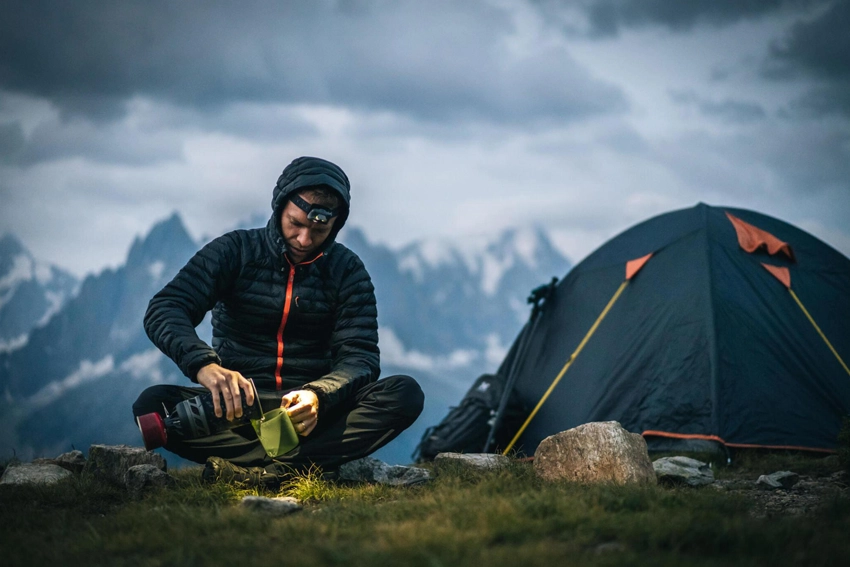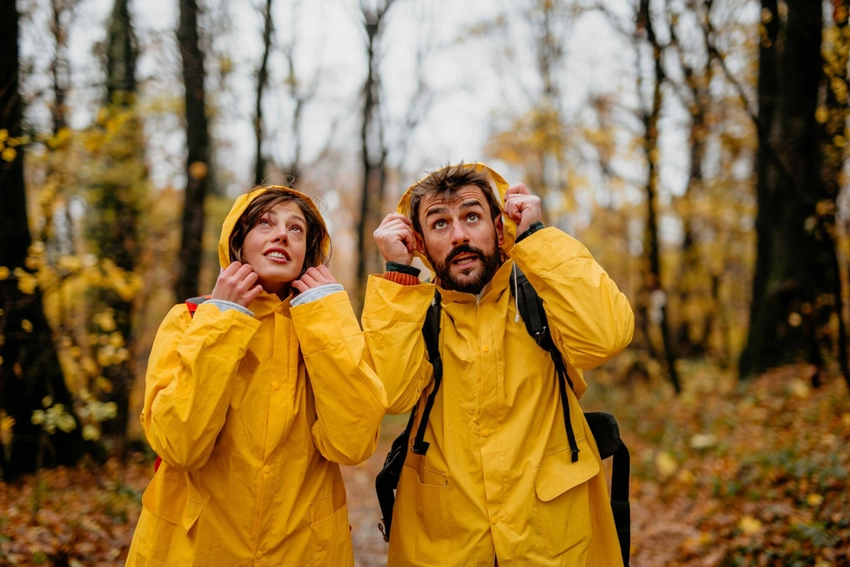Entering the world of backpacking opens up a realm of adventure and discovery amidst nature’s vast expanse. Yet, beneath the allure of scenic vistas and winding trails lies the essential foundation of skills every backpacker must possess.
In this guide, we delve into the fundamental basics that serve as the backbone of every successful backpacking excursion. These skills act as the navigator, guiding adventurers through uncharted territories, the refuge providing shelter from the elements, and the sustenance fueling their journey. Whether you’re a seasoned explorer or a newcomer to the trail, mastering these skills is essential for safety and enhancing the richness of your outdoor experiences.
Throughout this journey, we’ll explore essential navigation techniques, delve into the art of shelter and campsite setup, uncover strategies for managing food and water, and prioritize safety and emergency preparedness. By embracing these core principles, you’ll embark on your backpacking adventures with confidence, forging a deeper connection with the wilderness with each step you take.
Let’s embark on this exploration together, as we uncover the essentials of backpacking and unlock the wonders of the great outdoors.
Navigation Skills
Navigation skills are the backbone of every successful backpacking journey, ensuring that you can confidently navigate through diverse terrain and reach your intended destinations. Whether you’re exploring remote trails or venturing into unfamiliar wilderness areas, mastering these skills is essential for safety and peace of mind.
Map Reading:
Understanding how to read topographic maps is a fundamental skill for every backpacker. Topographic maps provide crucial information about the terrain, including elevation changes, water sources, and prominent landmarks. Learn to interpret contour lines, symbols, and scale to accurately gauge distances and plan your route.
Compass Use:
While GPS devices have become increasingly popular, a reliable compass remains an essential tool for navigating in the wilderness, especially in areas with poor satellite reception. Learn the basics of compass navigation, including how to take bearings, orient the map, and navigate using a compass in conjunction with map features.
GPS Navigation:
Global Positioning System (GPS) devices offer valuable assistance in navigating through challenging terrain. Familiarize yourself with your GPS device’s features, including marking waypoints, tracking your route, and using features like breadcrumb trails to backtrack if needed. However, always carry a paper map and compass as backups in case of device failure or battery depletion.
Orienting Yourself:
Before setting out on a hike, take time to orient yourself with your surroundings. Identify prominent landmarks, note the direction of major features such as rivers or mountain ranges, and establish a mental map of the area. Pay attention to trail junctions, signage, and natural markers to ensure you stay on course during your hike.
Pre-trip Planning:
Proper pre-trip planning is essential for a successful backpacking adventure. Research your route thoroughly, including trail conditions, potential hazards, and water sources along the way. Plan alternative routes and escape routes in case of emergencies, and always inform someone of your itinerary before heading out.
By honing your navigation skills and practicing them regularly, you’ll gain the confidence to explore new trails and wilderness areas safely. Remember that navigation is not just about finding your way—it’s also about enjoying the journey and immersing yourself fully in the natural beauty that surrounds you.
Setting Up Shelter and Campsites for Backpacking

Selecting a suitable campsite and setting up your shelter are essential skills for any backpacker. A well-chosen campsite provides comfort, protection from the elements, and minimizes your impact on the environment. Here are some key considerations for shelter and campsite setup:
Choosing a Campsite:
When selecting a campsite, look for a flat, well-drained area away from hazards such as dead trees, rocky terrain, or potential flood zones. Consider factors such as proximity to water sources, prevailing winds, and exposure to the sun. Follow Leave No Trace principles by choosing established campsites whenever possible to minimize your impact on the environment.
Types of Shelters:
Backpackers have a range of shelter options to choose from, including tents, hammocks, tarps, or bivy sacks. Each type of shelter has its advantages and disadvantages depending on factors such as weight, weather conditions, and personal preference. Practice setting up your chosen shelter before your trip to ensure a quick and efficient setup in the field.
Pitching Your Shelter:
Properly pitching your shelter is essential for comfort and protection from the elements. Follow manufacturer instructions or guidelines for setting up your tent, ensuring that it is taut and securely staked down to withstand wind and rain. For hammocks or tarps, consider factors such as hammock angle, tree spacing, and ground clearance to optimize comfort and stability.
Campsite Organization:
Keep your campsite organized to maximize efficiency and minimize environmental impact. Designate specific areas for cooking, eating, sleeping, and storing gear to maintain order and cleanliness. Hang food and scented items in bear-proof containers or bear bags to prevent wildlife encounters, and pack out all trash and waste to leave no trace of your presence.
Leave No Trace:
Follow Leave No Trace principles to minimize your impact on the environment and preserve wilderness areas for future generations. Practice proper waste disposal, minimize campfire impacts, and respect wildlife by observing from a distance and avoiding disturbance. Leave your campsite in better condition than you found it, ensuring that others can enjoy the same pristine wilderness experience.
By mastering the art of shelter and campsite setup, you’ll create a safe and comfortable home away from home during your backpacking adventures. Remember to prioritize environmental stewardship and Leave No Trace ethics to ensure that wilderness areas remain pristine for generations to come.
Food and Water Management

Proper management of food and water is essential for sustaining energy, hydration, and overall well-being during backpacking trips. Understanding how to source, treat, and conserve these vital resources ensures a safe and enjoyable outdoor experience. Here are some key principles for food and water management:
Hydration:
Maintaining proper hydration is crucial for backpackers, especially in hot and arid environments. Carry an adequate supply of water or identify reliable water sources along your route. Plan your water consumption to ensure you stay hydrated throughout the day, and consider factors such as exertion level, temperature, and humidity when determining your hydration needs.
Water Treatment:
Treat all water obtained from natural sources, including streams, lakes, and rivers, to prevent waterborne illnesses. Portable water filtration systems, chemical treatment tablets, or ultraviolet (UV) light devices are effective methods for purifying water in the backcountry. Follow manufacturer instructions and guidelines for proper water treatment to ensure safe drinking water.
Food Planning:
Plan your meals carefully to provide adequate nutrition and energy for your backpacking adventures. Choose lightweight, non-perishable foods that are high in calories and nutrients, such as dehydrated meals, nuts, dried fruits, and energy bars. Consider factors such as weight, bulk, and preparation time when selecting food items for your backpacking trip.
Food Storage:
Proper food storage is essential for preventing wildlife encounters and minimizing environmental impact. Use bear-resistant food containers or bear bags to store food and scented items securely, especially in areas with bear activity. Hang food and trash at least 100 feet away from your campsite and 10 feet above the ground to deter wildlife and reduce the risk of human-wildlife conflicts.
Waste Management:
Practice Leave No Trace principles by minimizing food waste and properly disposing of food scraps and packaging. Pack out all trash and waste, including food wrappers, fruit peels, and leftover scraps, to leave your campsite clean and pristine. Avoid burying or burning food waste, as it can attract wildlife and disrupt natural ecosystems.
By prioritizing proper food and water management techniques, you’ll ensure that you have the energy and hydration needed to tackle your backpacking adventures safely and sustainably. Plan ahead, stay hydrated, and minimize your environmental impact to enjoy memorable experiences in the great outdoors.
Safety and Emergency Preparedness
Safety and emergency preparedness are paramount considerations for every backpacker, ensuring that you can navigate potential hazards and respond effectively to unexpected challenges in the wilderness. By equipping yourself with the necessary knowledge, skills, and equipment, you can mitigate risks and enjoy your outdoor adventures with confidence. Here are some key principles for safety and emergency preparedness:
First Aid Kit:
Carry a well-stocked first aid kit containing essential supplies for treating common injuries and medical emergencies encountered in the backcountry. Items such as bandages, adhesive tape, antiseptic wipes, pain relievers, and blister treatment are essential for addressing minor injuries and illnesses.
Emergency Shelter:
Pack a lightweight emergency shelter, such as a space blanket, bivy sack, or lightweight tent, to provide protection from inclement weather or unexpected overnight stays in the wilderness. Consider factors such as durability, weather resistance, and ease of setup when selecting an emergency shelter for your backpacking kit.
Communication Devices:
Carry communication devices such as a cell phone, satellite phone, two-way radio, or personal locator beacon (PLB) to summon help in case of emergencies. Ensure that your communication devices are fully charged and have adequate signal coverage for your intended hiking area.
Navigation Tools:
Bring reliable navigation tools such as a map, compass, or GPS device to help you stay on course and navigate through unfamiliar terrain. Familiarize yourself with basic navigation techniques, including map reading, compass use, and GPS navigation, to confidently navigate through diverse landscapes.
Emergency Plan:
Develop an emergency plan outlining steps to take in case of emergencies, including injuries, getting lost, or encountering severe weather. Share your itinerary and emergency plan with a trusted friend or family member before departing on your backpacking trip, and establish a timeline for checking in at designated intervals.
Weather Awareness:
Stay informed about weather conditions in your hiking area and be prepared to adjust your plans accordingly in response to changing weather patterns. Monitor weather forecasts before and during your backpacking trip, and be prepared to seek shelter or alter your route to avoid hazardous conditions.
Leave No Trace:
Practice Leave No Trace principles to minimize your impact on the environment and preserve natural wilderness areas for future generations. Leave your campsite cleaner than you found it, pack out all trash and waste, and avoid disturbing wildlife or sensitive habitats.
Stay informed, be prepared, and take proactive measures to ensure a safe and enjoyable experience in the great outdoors.
In Conclusion
From mastering navigation techniques to ensuring proper food and water management, these fundamental skills serve as the backbone of safe and enjoyable backpacking adventures.
By honing your navigation skills, you can confidently navigate through diverse terrain and reach your intended destinations, while proper shelter and campsite setup provide comfort and protection from the elements. Managing food and water resources ensures sustained energy and hydration throughout your journey, while prioritizing safety and emergency preparedness equips you to respond effectively to unexpected challenges.
As you embark on your backpacking adventures, remember to embrace Leave No Trace principles and minimize your impact on the environment. Pack out all trash and waste, leave campsites cleaner than you found them, and tread lightly to preserve the natural beauty of wilderness areas for future generations.
Above all, approach your backpacking adventures with a sense of curiosity, humility, and reverence for the wonders of the natural world. Whether you’re embarking on a day hike or a multi-day trek, each step you take in the wilderness is an opportunity for growth, discovery, and connection with the world around you.
As you venture forth into the great outdoors, may you find solace in the rhythm of your footsteps, inspiration in the beauty of your surroundings, and fulfillment in the challenges overcome along the way. With these essential skills as your guide, may your backpacking journeys be filled with unforgettable moments, meaningful experiences, and a profound appreciation for the transformative power of nature.
Additionally, ensure your backpacking gear includes efficient and reliable cooking equipment – check out our guide to the best backpacking stoves for convenient meal preparation on the trail.
Above all, approach your backpacking adventures with a sense of curiosity, humility, and reverence for the wonders of the natural world.
Safe travels, and may your adventures be as boundless as the horizon that stretches before you.




